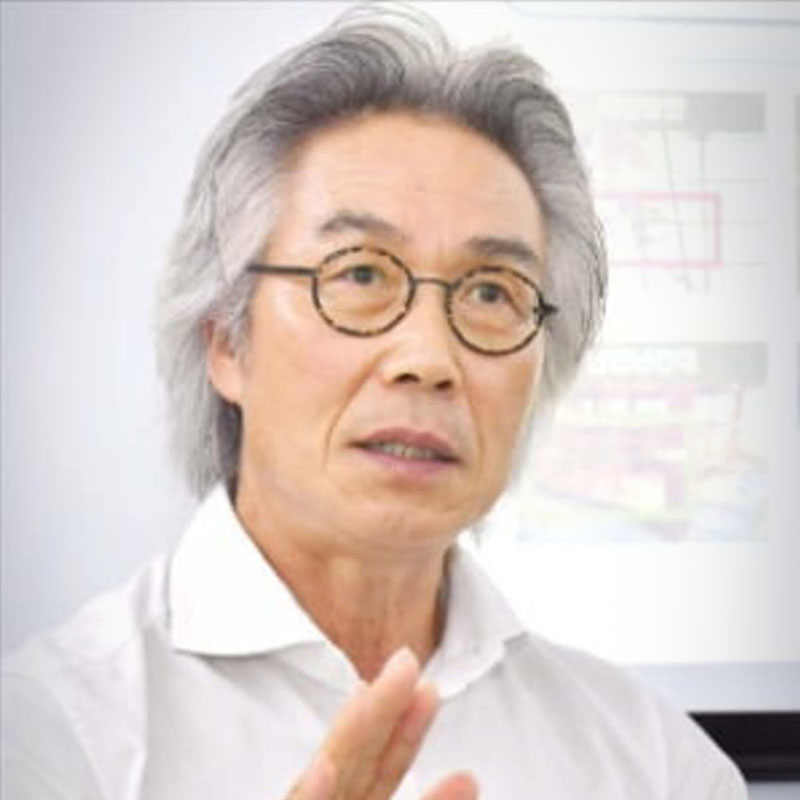
Park Chan-sik, a professor of architecture at Chung-Ang University, said, “Prevention is more important than punishment. AI technology prevents 80 percent of construction accidents.”
Development of Smart Safety Management System
Automatically monitor your work environment
Application of actual site with Seoul Metropolitan Government
“We have prepared the first accident prevention system in Korea by utilizing 4th industrial revolution technologies such as artificial intelligence (AI) and blockchain. We have signed an agreement with the Seoul Metropolitan Government to find out the value of this technology, and we have begun to apply it on.”
Park Chan-sik, a professor of architecture at Chung-Ang University, explained the ‘smart construction worker safety management system’ in an interview with the Korea Economic Daily at Chung-Ang University’s laboratory in Heukseok-dong, Seoul on the 21st.
He developed a safety prevention system for workers who are always exposed to danger at construction sites. In short, it is a system that automatically monitors the location and work environment of workers.
“By applying the smart construction worker safety management system, 60 percent of the current 827 construction-related industrial safety and health rules can be read for compliance. This reading alone will prevent 80 percent of 1345 construction-related disasters in 2018.”
Professor Park, who majored in construction management, focused on research on “construction failure.” From 1995 to now, he has been immersed in finding ways to prevent risks at construction sites.
“According to statistics from the Occupational Safety and Health Agency, 485 people died at construction sites annually in 2018. An average of 1.5 people a day. About 350,000 small construction sites across the country are still a safety blind spot for inexperienced and older workers. Smart technology is needed because the government cannot inspect all of these sites.”
This system is largely divided into two categories. First, it uses AI-based visual imaging technology to identify the shape of the joints, speed and direction of the workers at the site. By analyzing existing construction accident cases and learning numerous dangerous images and data obtained from AI, it automatically determines whether they have signed safety protection and safety hooks and whether they do not comply with regulations at construction sites. The following is sensor-based hazard reading technology. Location sensors, biometric sensors, and environmental sensors are installed at the site to identify dangerous factors and areas at the site, such as loading materials and construction materials, and to inform workers. Professor Park explained, “This method is different from on-site inspections that punish people if they fail to comply with the Major Disaster Act.”
His system is recognized overseas as well. A total of 19 safety research results, including 360-degree panoramic virtual reality (VR) and augmented reality (AR) safety education contents, were introduced in SCI (Science and Technology thesis citation index)-level overseas journals. It was also selected as one of the top three studies that contributed to human life by Elsbear, known as the world’s largest publisher in science and engineering, and received an award in 2015.
Professor Park and the research team signed a business agreement with the Seoul Metropolitan Government and introduced smart construction safety technology on a trial basis at the construction site in Seoul last month. The first example is the Youth Music Creation Center in Sinjeong-dong, Seoul. The building, which is scheduled to be completed in April 2022, applies the work of inputting and controlling on-site risk information by capturing the working environment with a 360-degree camera among the systems developed by Professor Park. In addition, Hanjin Heavy Industries & Construction and Dongsung Construction signed a memorandum of understanding (MOU) to apply the system.
Professor Park’s dream goal is to “change the paradigm of construction safety.” “The current safety management method, which is focused on inspection, cannot have much effect,” he said. “It is important to create an autonomous safety management culture by introducing a new smart system.”
